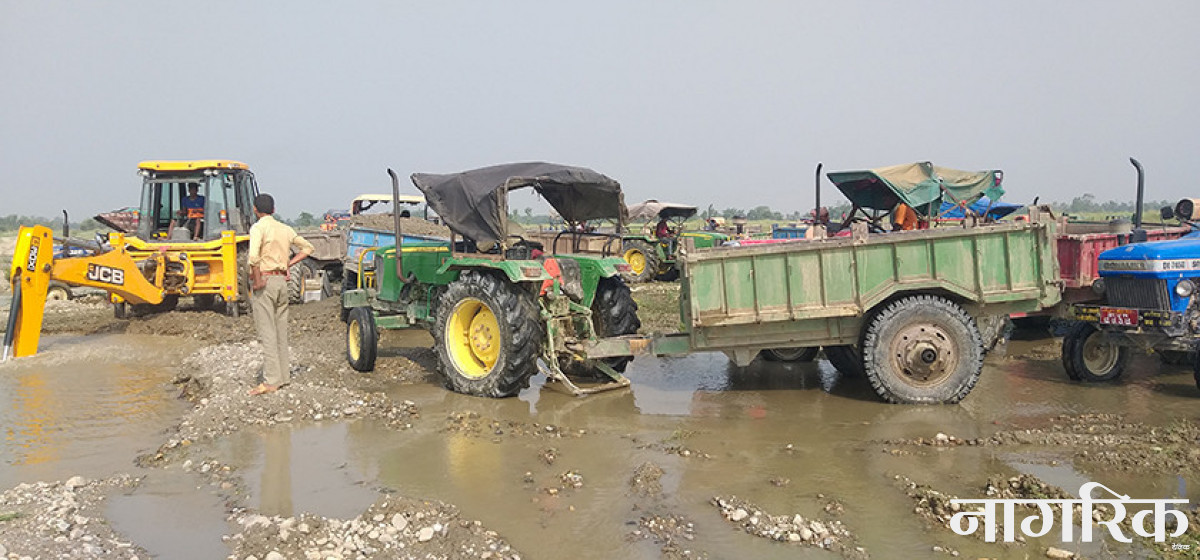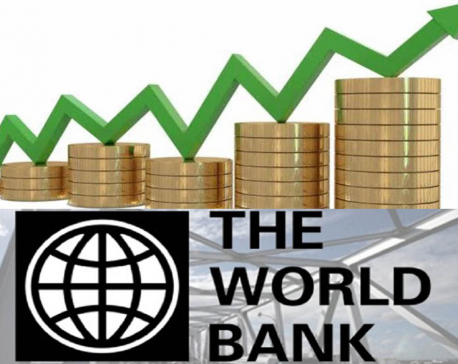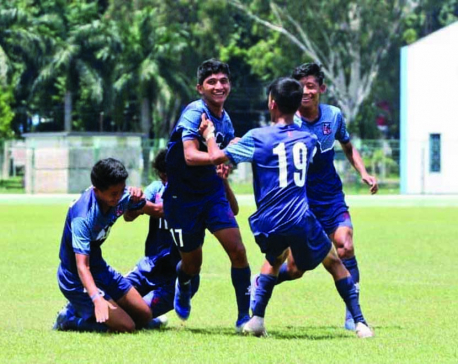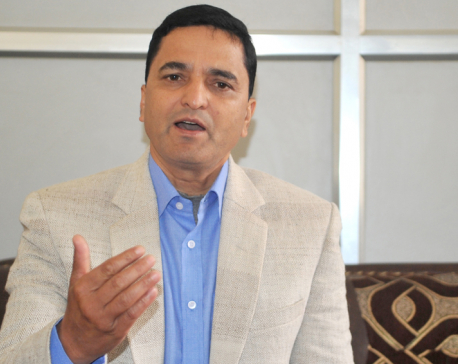
OR
Capital expenditure shoots up as fiscal year nears end
Published On: July 9, 2020 10:11 AM NPT By: RAJESH KHANAL

Quality of development works under question as funds are being spent haphazardly
KATHMANDU, July 8: With only a week left for the end of the current fiscal year which will end on July 15, the government has spent only 35.45 percent of the budget earmarked for infrastructure development while the revenue collection has reached 64 percent of the target.
The records of the Financial Comptroller General Office (FCGO) show that the government spent Rs 144.62 billion against the targeted amount of Rs 408 billion under the heading of capital expenditure as of Tuesday. Similarly, the revenue collection stood at Rs 712.29 billion against the target of Rs 1.11 trillion for the fiscal year 2019/20.
Despite the commitment of the government to make adequate spending for development activities, capital expenditure has always been a problem in Nepal. This prompts the government authorities to exhaust funds in the last hour of the fiscal year, resulting in low quality development works popularly known as ‘Asare Bikas.’
Since the last fiscal year, the government also put forth measures to improve its revenue administration and achieve the target of revenue collection. With the prevailing crisis due to the COVID-19, the government this year has got an excuse in both.
Financial Comptroller General Gopi Nath Mainali told Republica that the achievements of both the target of capital expenditure and revenue collection this year were badly affected by the lockdown and the COVID-19 pandemic. “However, with the fast approaching end of the fiscal year, some improvements have been observed in both areas, especially in the past few weeks,” he said.
According to the FCGO, the government has collected revenue totaling Rs 64.50 billion in the past three weeks since June 14, a daily average of Rs 2.80 billion. Revenue collection increases normally in the final month of the fiscal year as business entities rush to clear their tax liabilities for their financial closure. “As high as Rs 6 billion was added to the state treasury in a day mainly due to this reason,” Mainali said.
An increase in revenue collection has given some respite to the government that is struggling to manage funds to settle its immediate liabilities amid a slump in economic activities triggered by the COVID-19 pandemic. In addition to exerting pressure on various tax revenue sources to clear tax dues on time, the government has asked the public enterprises to submit the tentative dividend amount by the end of this fiscal year.
Likewise, capital expenditure during the period stood at Rs 18.06 billion, an average of Rs 785 million a day. According to Mainali, an increase in the reimbursement amount to the projects has led to a significant rise in the capital expenditure.
With an exception to the abnormal situation this year, a slow and inadequate capital expenditure pattern has been a perennial problem almost every year. The government statistics show that in the five years during 2014/15 through 2018/19, around 40 percent of the allocated amount was usually spent in the last month of the fiscal year.
An analysis of the fiscal year 2018/19 shows that capital expenditure in the first quarter of the fiscal year stood at 5.5 percent. It rose to 17.68 percent by mid-January, the first half of the fiscal year, and then reached 57 percent with just one week before the end of the fiscal year. In the last one week, the government spent an additional 16.4 percent forcibly enlarging the development budget expenses to 73.4 percent in an apparent bid to avoid public criticism.
Slow and inadequate capital expenditure displays the state’s inability to use funds allocated under the prescribed headings. This not only impedes development activities, but also hampers the creation of jobs, affects peoples’ incomes and takes down liquidity in financial sectors to mobilize adequate funds.
You May Like This

Complete education, full health could double Nepal's GDP per capita: WB
KATHMANDU, June 7: Nepal has the potential to double its Gross Domestic Product (GDP) per capita in the long run if... Read More...

Nepal trounces Bhutan 6-0, to face India in final
KATHMANDU, Aug 30: Nepal U-15 football team has reached the final of ongoing South Asian Football Federation (SAFF) U-15 Championship. ... Read More...

Efforts on to remove Nepal aviation from EU blacklist: Minister Bhattarai
KATHMANDU, Aug 15: Minister for Culture, Tourism and Civil Aviation, Yogesh Kumar Bhattarai, has said efforts were on to remove... Read More...






Just In
- NRB introduces cautiously flexible measures to address ongoing slowdown in various economic sectors
- Forced Covid-19 cremations: is it too late for redemption?
- NRB to provide collateral-free loans to foreign employment seekers
- NEB to publish Grade 12 results next week
- Body handover begins; Relatives remain dissatisfied with insurance, compensation amount
- NC defers its plan to join Koshi govt
- NRB to review microfinance loan interest rate
- 134 dead in floods and landslides since onset of monsoon this year











Leave A Comment